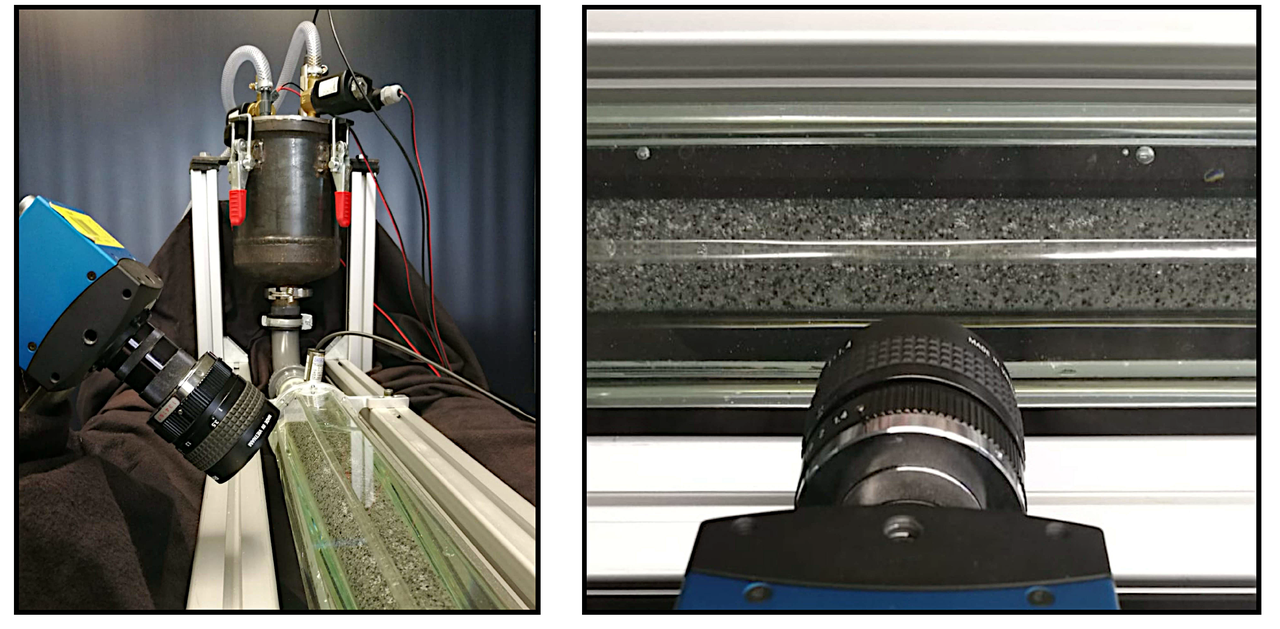Concrete is the world's most frequently used building material, enabling the construction of high-rise buildings, super highways, and sophisticated bridges and dams.
 Mikrotron camera setup (left) and close up of the model fluid (right). Image Credit: Mikrotron GmbH
Mikrotron camera setup (left) and close up of the model fluid (right). Image Credit: Mikrotron GmbH
Recent developments in the 3D printing of concrete has led to a growing interest in predicting its "rheological" properties, that is, the deformation of hardened concrete and the flow behavior of freshly mixed concrete, which is difficult to measure because of concrete's poor optical accessibility. Lacking visibility, many assumptions have to be made and these assumptions are error-prone, leading to problems with concrete placement, consolidation, and finishing as well as with hardened state properties such as strength and durability.
Engineers at the Institute of Mechanics and Fluid Dynamics in Freiberg, Germany have built an experimental setup called PulsaCoP (Pulsating Concrete Pump) that allows for the optical investigation of dense, granular suspensions during a pulsating flow using a Mikrotron MotionBLITZ EoSens mini2 recording camera.
At the heart of the PulsaCoP system is a cylindrical pipe made of borosilicate glass enclosed by an outer channel with an octagonal cross-section filled with glycerin. The refractive index of all materials -- glycerin, borosilicate glass, and concrete -- are nearly identical in order to allow undisturbed optical access to the entire flow domain.
The Mikrotron camera was set at a resolution of 15 μm per pixel with illumination provided by a transmitted light setup. Images were taken at a frame rate of 100 Hz to 525 Hz, with an illumination time for all measurements of 10 μs. By adjusting the focus plane, the measurements could be performed in the center-plane of the tube only. Trigger signals were forwarded to the pressure measurement so that pressure and speed could be correlated exactly.
Due to its optical accessibility, PulsaCoP can determine velocity data, flow profile, and pressure loss, which can all be correlated with rheological data. These findings provide valuable information for the practical application of pumping concrete and for granular materials in general. The Institute of Mechanics and Fluid Dynamics plans for more rigorous validation of the PulsaCoP experiment by comparison with data from large-scale pumping experiments with real concrete.
Source: https://mikrotron.de/